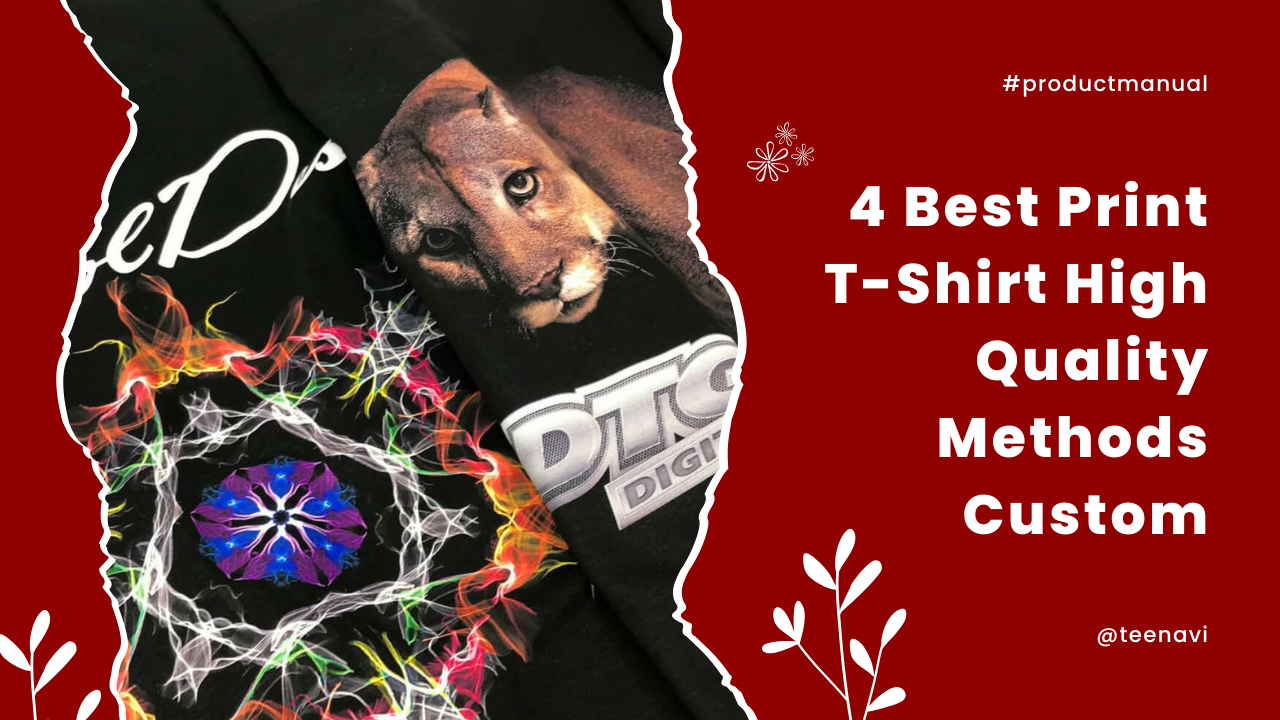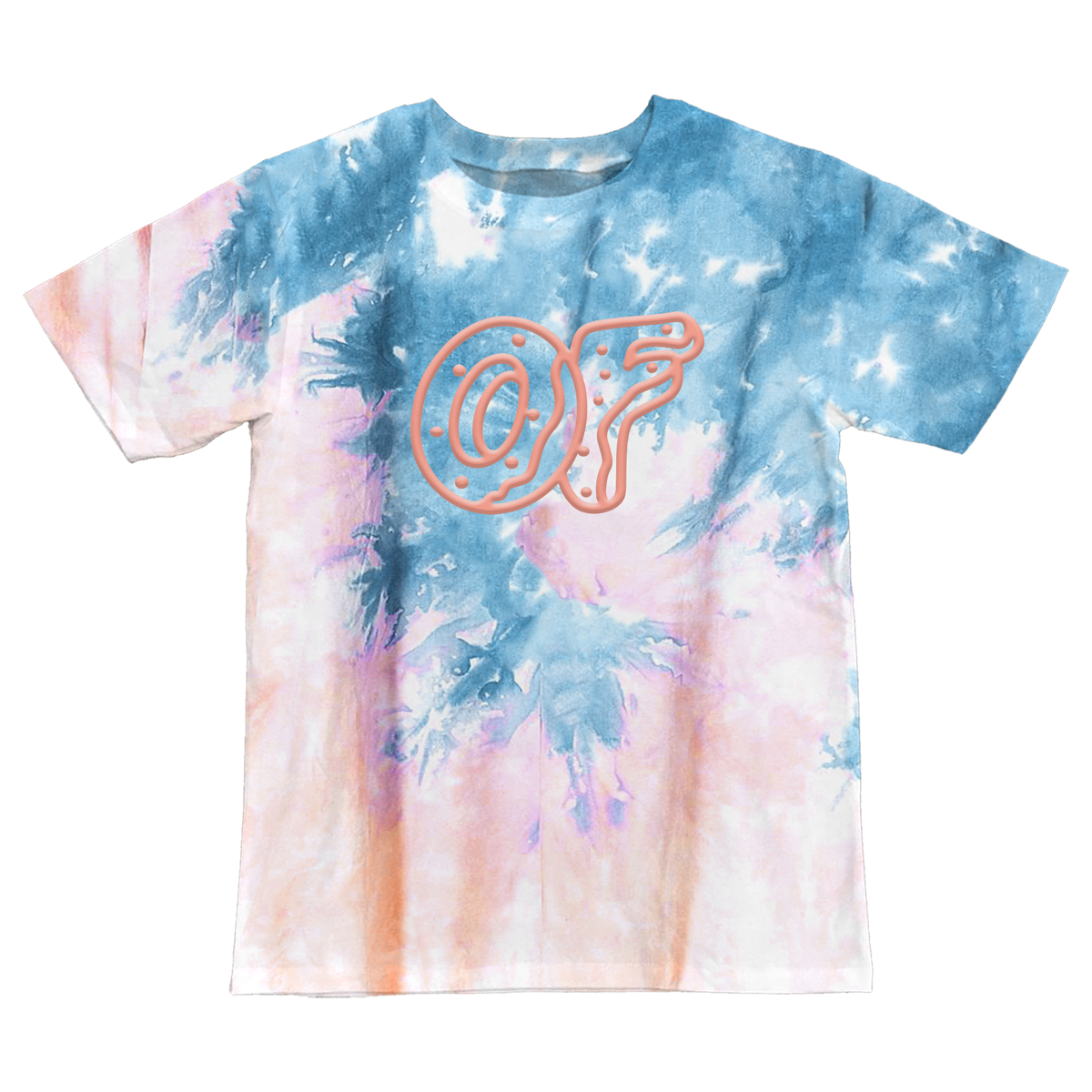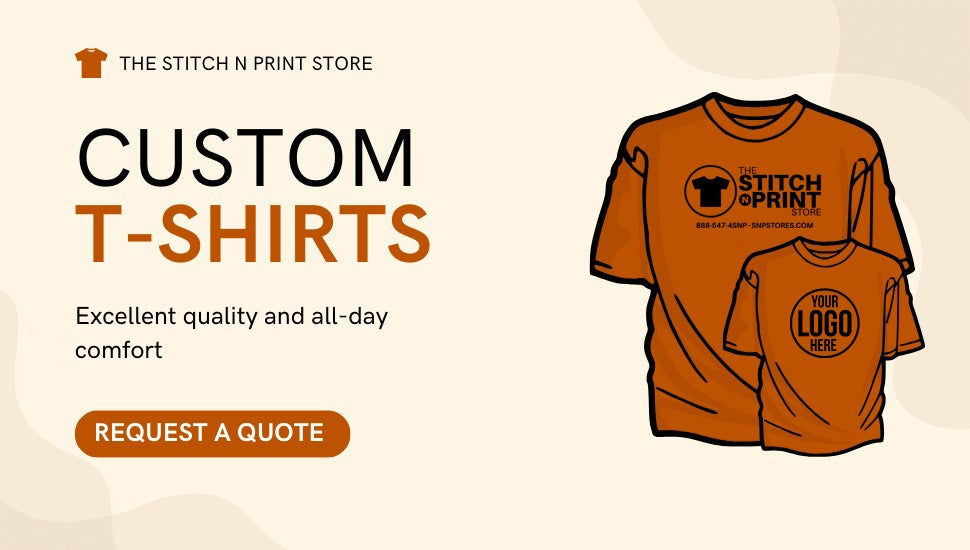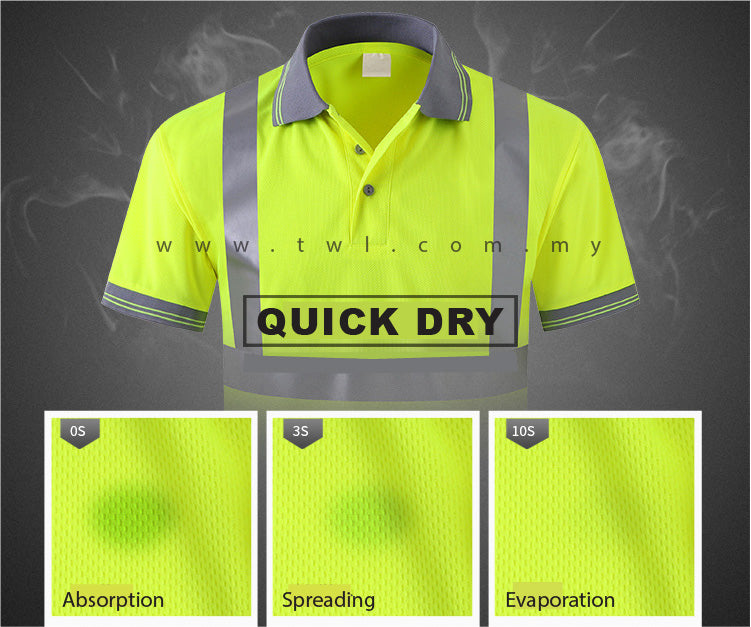The humble t-shirt, once a mere piece of clothing, has evolved into a powerful medium for personal expression, identity, and even activism. This transformation is largely attributed to the rapid advancements in custom t-shirt printing technology, which have shifted from a niche hobby to a billion-dollar industry. As we look ahead, the future of this sector appears promising, driven by emerging trends and innovations that aim to make personalized apparel more accessible, sustainable, and visually captivating than ever before.
The Evolution of Custom T-Shirt Printing: From Screen Printing to Cutting-Edge Technology
The journey of custom t-shirt printing has been marked by several significant shifts in technology and methodology. Initially dominated by traditional screen printing methods, the industry has witnessed remarkable changes over the years. Each shift has opened new avenues for creativity, personalization, and efficiency.
The Traditional Era: Screen Printing Dominance
For many decades, screen printing was the primary method employed for producing custom designs on t-shirts. This technique involves creating a stencil (or screen) that allows ink to be pushed through onto the fabric. It became popular for its ability to produce vibrant colors and sharp lines, making it ideal for large runs of identical designs.
Screen printing's efficiency made it a staple for businesses, sports teams, and events. However, it also came with significant drawbacks. High upfront costs for screens, inks, and equipment often deterred smaller businesses and individuals from utilizing this method. Additionally, the need for bulk orders limited creative freedom and customization possibilities.
The Advent of Digital Printing
With the rise of digital technology, the landscape of custom t-shirt printing began to change dramatically. Digital printing methods emerged as viable alternatives to traditional methods, opening doors for individual artists and small businesses. This technological revolution allowed for on-demand production, drastically reducing waste and inventory issues associated with traditional printing.
Digital printing caters to individuality by enabling unique designs without requiring minimum order quantities. This transition democratized the custom t-shirt market, fostering an environment where anyone could create and share their artistic visions with the world.
Rapid Technological Advancements
As technology continues to advance, we see the emergence of even more sophisticated printing techniques. Innovations like direct-to-garment (DTG) printing and heat transfer methods further enhance the possibilities for customization. These technologies are not only speeding up production but also improving the quality of prints—making it easier for brands and individuals to explore their creativity without barriers.
In short, the evolution of custom t-shirt printing reflects a broader trend toward personalization, accessibility, and sustainability. As we move forward, it’s clear that the future of this industry will continue to be shaped by these evolving technologies.
Digital Printing: Revolutionizing Customization and Speed in T-Shirt Printing

Digital printing has revolutionized the way we approach custom t-shirt design and production. By leveraging cutting-edge technologies, digital printing enables greater flexibility in both the design process and final product.
On-Demand Printing: A Game Changer
One of the most significant advantages of digital printing is the ability to produce garments on demand. Gone are the days when customers had to commit to large orders before seeing their ideas come to life. With on-demand digital printing, individuals can create bespoke pieces tailored to their specific tastes without the worry of excess inventory.
This shift aligns perfectly with the growing movement toward sustainable consumption. As consumers become more conscious of their environmental impact, the ability to print only what is needed minimizes waste associated with overproduction. Moreover, this model reduces storage requirements for retailers and small businesses alike.
Endless Design Possibilities
Digital printing offers an array of design possibilities previously unattainable with traditional methods. Complex gradients, intricate patterns, and high-resolution images can be reproduced with stunning detail. Innovators in the field now have the freedom to experiment with various styles and aesthetics, resulting in more diverse and visually appealing products.
Designers can employ software tools to manipulate images and patterns at an unprecedented level. This flexibility encourages collaboration between artists and clients, facilitating the creation of truly unique apparel that speaks to personal narratives or brand identities.
Faster Turnaround Times
Another benefit of digital printing is speed. Traditional printing methods often require lengthy setups and drying times, causing delays in product delivery. In contrast, digital printing utilizes streamlined processes that significantly reduce turnaround times.
For individuals and small businesses needing personalized apparel for events, promotions, or special occasions, this agility is invaluable. Clients can receive their customized t-shirts in record time, allowing them to focus on what matters most: showcasing their creativity and expressing their style.
Direct-to-Garment Printing: High-Quality, Detailed Images on Demand

Direct-to-garment (DTG) printing represents one of the most exciting advancements in custom t-shirt printing technology. This method allows for the application of high-quality images directly onto fabric, providing stunning detail and vibrant color reproduction.
How DTG Works
DTG printing uses specialized inkjet technology to spray ink onto fabric in a precise manner. Unlike traditional printing methods, where ink is layered onto the surface, DTG integrates the ink into the fibers of the garment. This results in a softer feel and more durable prints that withstand washing and wear over time.
As DTG technology further advances, we can expect even higher resolutions and a broader color spectrum, enabling designers to push the envelope of creativity. The potential for photo-realistic prints opens up endless possibilities for custom designs that resonate with wearers on a personal level.
Bridging the Gap Between Art and Fashion
DTG printing empowers artists, illustrators, and photographers to translate their work onto wearable canvases. This democratizes fashion, transforming clothing into an extension of individual artistry.
Small business owners and independent creators can leverage DTG technology to launch their collections without the burden of massive production runs. Consumers can access where art meets functionality, sporting pieces that tell stories or convey messages meaningful to them personally.
Cost-Effective Solutions for Small Businesses
Unlike traditional bulk printing methods, which require substantial investments upfront, DTG printing offers a cost-effective solution for entrepreneurs and creatives. With the ability to produce single items on demand, start-ups can enter the market with minimal financial risk.
This accessibility fosters a landscape where innovation thrives. Many unique brands emerge, each focused on offering something distinct to their audience. As competition grows, so does the quality and creativity of the custom t-shirts available to consumers.
Sublimation Printing: Merging Dye and Fabric for Vibrant, Long-Lasting Designs

Sublimation printing has emerged as a prominent player in the custom t-shirt printing landscape. This technique combines dye and fabric to create vibrant, long-lasting designs that resonate with wearers.
Understanding Sublimation Printing
At its core, sublimation printing involves transferring dye onto a substrate using heat. The process converts solid dye into gas, allowing it to bond with polyester fabrics and create vivid prints that become part of the material itself.
One of the key benefits of sublimation printing is the durability of the designs. Since the dye penetrates the fabric rather than sitting on top of it, sublimated prints are resistant to fading, peeling, or cracking. This characteristic makes sublimation an ideal choice for activewear, promotional items, and custom apparel that sees regular use.
Expanding Design Horizons
Sublimation printing also opens up new avenues for creativity. Unlike traditional methods, sublimation allows for full-color designs that feature complex graphics and photographs. This versatility means that designers can experiment with bold patterns, intricate details, and multi-dimensional artwork that captures attention.
Brands can now offer limited-edition designs that appeal to niche markets. For example, artists can collaborate with fashion designers to create collections that reflect contemporary art movements, bridging the gap between creativity and commerce.
Eco-Friendly Considerations
As the demand for sustainable practices in the fashion industry grows, sublimation printing shines as an eco-friendly option. The process generates less waste compared to traditional methods, and the inks used are often water-based and free from harmful chemicals. Furthermore, sublimation works best with recycled polyester fabrics, creating a closed-loop system that benefits both consumers and the planet.
By adopting sublimation printing, brands signal their commitment to environmentally responsible practices while still delivering stunning products to their customers.
The Rise of 3D Printing in Apparel: Customized Fit and On-Demand Creations

3D printing is set to reshape the landscape of custom t-shirt printing by introducing unprecedented levels of personalization, fit, and sustainability. This innovative technology offers the potential for creating truly unique garments tailored to the individual's preferences.
The Potential of 3D Printed Garments
3D printing transforms the way we think about clothing design and manufacturing. Unlike traditional methods that rely on sewing and cutting fabric, 3D printing enables the direct creation of garments from computerized designs.
This allows for intricate, customizable patterns that can cater to various body shapes and sizes. As a result, consumers can enjoy apparel that fits perfectly, enhancing comfort and confidence.
An Intersection of Fashion and Technology
The fusion of fashion and technology through 3D printing opens up exciting possibilities. Designers can experiment with avant-garde silhouettes, creating pieces that challenge conventional notions of clothing. The ability to generate complex geometries allows for striking visual effects, elevating custom t-shirt design to a new level.
Moreover, the integration of interactive elements, such as embedded sensors or LED displays, offers further opportunities for innovation. Imagine wearing a t-shirt that responds to your mood or environment, making your outfit a dynamic extension of your personality.
Sustainability Through Customization
As sustainability becomes a primary concern in the fashion industry, 3D printing addresses some of these challenges. The technology minimizes waste by producing garments layer by layer, using only the necessary materials.
Additionally, the potential for on-demand production means that brands can create items specifically based on consumer demand, ultimately reducing overproduction. By adopting 3D printing, the industry can move closer to a more sustainable model, ensuring that fashion is both stylish and environmentally friendly.
Sustainable Printing Practices: Eco-Friendly Options for the Future of T-Shirt Printing

As awareness surrounding environmental issues continues to rise, the custom t-shirt printing industry is responding with a commitment to sustainability. This movement encompasses a range of practices designed to minimize ecological footprints and promote responsible consumption.
Eco-Friendly Inks and Materials
One of the most notable developments in sustainable printing is the shift toward eco-friendly inks. Traditional inks often contain harmful chemicals and solvents that can damage the environment during production and disposal. In contrast, modern eco-friendly inks are derived from plant-based materials, ensuring safer applications for consumers and manufacturers alike.
Brands are also exploring the use of recycled materials in their fabrics. By incorporating recycled plastics and organic cotton into their production processes, companies can contribute to a circular economy that reduces waste and promotes resource conservation.
Emphasizing Local Production
Local production is an increasingly important aspect of sustainable t-shirt printing. By sourcing materials and manufacturing closer to home, companies can cut down on transportation emissions and support local economies.
Smaller print shops, especially those utilizing digital methods, are better positioned to engage in local production, catering to communities' needs and preferences. This localized approach fosters stronger relationships between businesses, consumers, and the environment.
Community Engagement and Educational Initiatives
Beyond implementing sustainable practices in their operations, many brands are taking proactive steps to educate consumers about the importance of eco-friendly choices in fashion. Workshops, events, and social media campaigns are being leveraged to raise awareness about the environmental impacts of clothing consumption, encouraging customers to make informed decisions.
By engaging with their communities, brands foster a sense of responsibility and inspire collective action toward sustainable living.
The Impact of Artificial Intelligence on Design and Production

Artificial intelligence (AI) is transforming every aspect of our lives, and the custom t-shirt printing industry is no exception. AI plays a pivotal role in streamlining design processes, optimizing production, and enhancing customer experiences.
Intelligent Design Tools
AI-powered design tools are revolutionizing how creators approach custom t-shirt art. These platforms analyze existing design trends and assist users in generating unique artwork that resonates with target audiences.
From suggesting color palettes to creating personalized patterns based on user input, AI eliminates many hurdles in the design process. This accessibility empowers individuals who may lack formal training or expertise, enabling them to express themselves creatively.
Streamlining Production Processes
In addition to assisting designers, AI can optimize production workflows. Machine learning algorithms can analyze data related to inventory management, supply chain logistics, and production schedules, ensuring efficient operations that meet consumer demands.
By predicting patterns in purchasing behavior, brands can proactively adapt their offerings and avoid overproduction. This level of precision reduces waste and contributes to more sustainable practices within the industry.
Enhanced Customer Experiences
Furthermore, AI enhances customer experiences by enabling personalized recommendations and targeted marketing strategies. Understanding consumer preferences and behaviors allows brands to tailor their communications, presenting customers with designs and options that genuinely resonate with them.
By employing AI-driven analytics, companies can streamline the buying process, ensuring that shoppers find precisely what they’re looking for with minimal effort. This focus on personalization cultivates a loyal customer base that feels understood and valued.
Personalized Experiences: The Future of T-Shirt Printing Beyond Mass Production

While mass production remains a cornerstone of the fashion industry, the future of custom t-shirt printing lies in personalization. Brands are beginning to recognize that consumers crave unique experiences that allow for self-expression and individuality.
The Power of Bespoke Apparel
Custom t-shirts offer a canvas for personal storytelling. Consumers are increasingly drawn to the idea of bespoke apparel that reflects their identity, values, or interests. Whether it's through slogans, illustrations, or patterns, each piece tells a story that resonates with the wearer's journey.
This desire for uniqueness is driving brands to embrace customization options beyond simple variations in color or size. Offering tools for consumers to create their designs or collaborate directly with artists fosters a deeper connection with the product.
Community-Centric Approaches
As the desire for personalization grows, brands are exploring community-centric approaches. Engaging local artists, designers, and makers in the creative process strengthens connections within communities and showcases diverse perspectives.
Limited-edition collaborations can spark excitement around exclusive designs, allowing consumers to feel a sense of belonging within a community of like-minded individuals. This ethos of co-creation enriches the entire experience, creating a sense of ownership and pride among customers.
Bridging the Gap between Physical and Digital
The future of personalized t-shirt printing also involves bridging the gap between physical and digital realms. Augmented reality (AR) and virtual reality (VR) technologies offer immersive experiences where customers can visualize their designs before purchase.
By integrating AR features into mobile apps and online platforms, brands enable customers to try on designs virtually, increasing confidence in their choices. This innovation not only enhances the shopping experience but also leads to higher satisfaction rates and fewer returns.
From Online Platforms to Mobile Apps: The Digitalization of Custom T-Shirt Ordering

In today's digital age, the custom t-shirt printing process has transitioned online, making it easier than ever for individuals to design and order their creations. The rise of e-commerce platforms and mobile apps has reshaped how consumers interact with custom apparel.
User-Friendly Design Interfaces
Online platforms dedicated to custom t-shirt printing provide user-friendly design interfaces that empower customers to create unique pieces effortlessly. These platforms often feature drag-and-drop tools, template options, and high-resolution previews, allowing users to experiment with different styles before finalizing their orders.
This democratization of design fosters creativity and encourages people of all backgrounds to engage with the art of t-shirt design. Whether crafting a piece for a special occasion or creating merchandise for a brand, customers can easily navigate the process from concept to finished product.
The Shift Toward Mobile Commerce
With the proliferation of smartphones, mobile commerce is on the rise. The availability of mobile apps dedicated to custom t-shirt ordering enhances convenience, allowing users to design and purchase products on the go.
Mobile apps can integrate features such as easy payment options, order tracking, and notifications for new design releases or discounts. This seamless user experience keeps customers engaged and encourages repeat purchases.
Leveraging Social Media for Promotion
Social media platforms play a vital role in promoting custom t-shirt printing businesses. Brands can showcase their latest designs, share customer testimonials, and engage with their audiences through compelling visual content.
User-generated content, such as photos of customers wearing their custom shirts, can create a sense of community and inspire others to explore their own creative endeavors.
By leveraging social media effectively, brands build strong relationships with their customers while expanding their reach to new audiences.
The Future of Custom T-Shirt Printing: Trends, Innovations, and Predictions

As we gaze into the future of custom t-shirt printing technology, several key trends and innovations emerge on the horizon. The ongoing evolution of this industry promises to make personalized apparel more accessible, functional, and sustainable than ever before.
Increasing Accessibility and Affordability
The combination of advancing technology and increased competition is driving down costs, making custom t-shirt printing more accessible to individuals and small businesses alike. As innovations expand, we can expect lower prices for both materials and manufacturing processes, allowing more people to enter the market and explore their creativity.
Advances in Fabric Technology
In tandem with printing methods, advances in fabric technology are changing how we think about custom t-shirts. Innovative fabrics that offer moisture-wicking properties, breathability, and durability are becoming more readily available.
This evolution enables brands to create garments that are not only visually stunning but also functional and comfortable for everyday wear.
Emphasis on Ethical Manufacturing Practices
As consumers become increasingly aware of ethical production practices, the demand for transparency and accountability in the fashion industry will grow. Brands that prioritize ethical manufacturing and sustainable sourcing will likely attract a loyal customer base.
In response, we will see more companies adopt fair labor practices, responsible sourcing, and environmentally friendly initiatives in their operations.
Conclusion
The future of custom t-shirt printing technology is undeniably bright and filled with potential. As we embrace new innovations and trends, the industry is poised to redefine how we express ourselves through fashion.
From the evolution of digital printing to the rise of sustainable practices, personalized experiences, and technological advancements, the custom t-shirt printing landscape is undergoing a profound transformation. Empowered by these developments, individuals and businesses alike have the opportunity to leave their mark on the world — one printed design at a time. As we look ahead, it’s clear that the power of self-expression through custom apparel will continue to thrive, shaping the way we communicate our identities and values.





